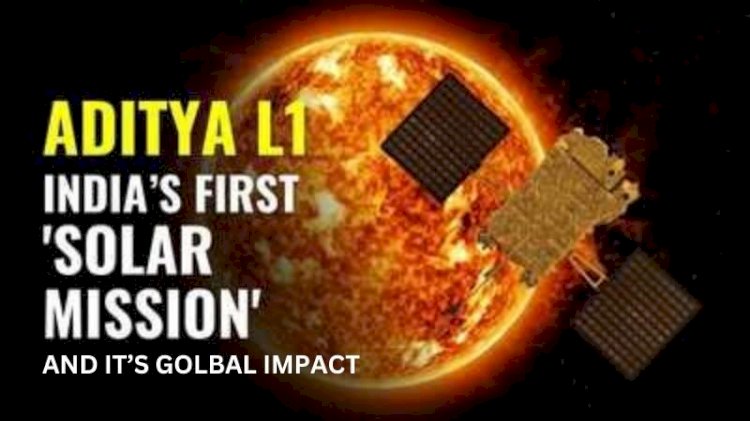Aditya-L1: India's First Sun Mission and Its Global Impact
India is embarking on a historic journey with its Aditya-L1 mission, its first-ever mission to the Sun. This endeavour by the Indian Space Research Organisation (ISRO) aims to explore the mysteries of the Sun, focusing on the solar corona, magnetic fields, and space weather prediction. With international collaboration and a strategic orbit placement, Aditya-L1 promises to shed light on the Sun's dynamic behaviour and its impact on Earth, offering valuable insights into space weather phenomena and cementing India's position in the global space exploration community.
By Shreya Rajvanshi Gangal

India, a nation renowned for its contributions to space exploration, is gearing up for an ambitious endeavour that will take it closer to the heart of our solar system - the Sun. The Aditya-L1 mission, India's maiden voyage to our nearest star, represents a significant leap forward in the country's space program. With its name inspired by the Hindu Sun god, Aditya, this mission promises to unlock the secrets of the Sun's dynamic behaviour, providing invaluable insights into space weather and its impact on Earth.
The Journey to Aditya-L1
India's journey to the Sun began with the successful Chandrayaan and Mangalyaan missions to the Moon and Mars, respectively. These missions showcased India's increasing prowess in space technology and fueled the ambition to explore new frontiers. Aditya-L1, led by the Indian Space Research Organisation (ISRO), aims to launch a satellite into orbit around the Sun, positioning it between the Sun and Earth at a distance of approximately 1.5 million kilometres from our star. This strategic location will allow the satellite to observe and study the Sun continuously.
Understanding the Sun's Mysteries
The Sun, a seemingly unchanging celestial body, is far from static. It exhibits a wide range of activities, from solar flares and coronal mass ejections to variations in its magnetic field. These phenomena have a direct impact on space weather, influencing Earth's climate and communication systems, and even posing risks to astronauts and satellites in orbit. Aditya-L1's primary mission is to unravel these mysteries, providing a better understanding of solar dynamics and their implications for our planet.
Key Objectives of Aditya-L1
- Studying the Solar Atmosphere: The satellite will focus on observing the outermost layer of the Sun, known as the solar corona. It will investigate the temperature variations and the flow of energy through this region.
- Measuring Solar Magnetic Fields: Aditya-L1 will help measure the strength and variations of the Sun's magnetic field, shedding light on the causes of solar eruptions and their effects on Earth.
- Predicting Space Weather: The mission will contribute to the prediction of space weather events, allowing us to better prepare for and mitigate their impacts on Earth's technology and infrastructure.
International Collaboration
Space exploration is a global endeavour, and Aditya-L1 is no exception. ISRO has collaborated with various international space agencies and organizations to enhance the mission's scientific capabilities. This collaborative approach not only expands the scope of research but also fosters cooperation and knowledge sharing among nations.
Conclusion
As India prepares to launch Aditya-L1, its first mission to the Sun, the nation reaffirms its commitment to advancing our understanding of the cosmos. This bold undertaking promises to unlock the secrets of our nearest star and provide critical insights into space weather, benefiting not only India but the entire world. Aditya-L1 represents a testament to the power of international collaboration and human curiosity, reminding us of the boundless possibilities that await us in the vast expanse of space.
What's Your Reaction?


















